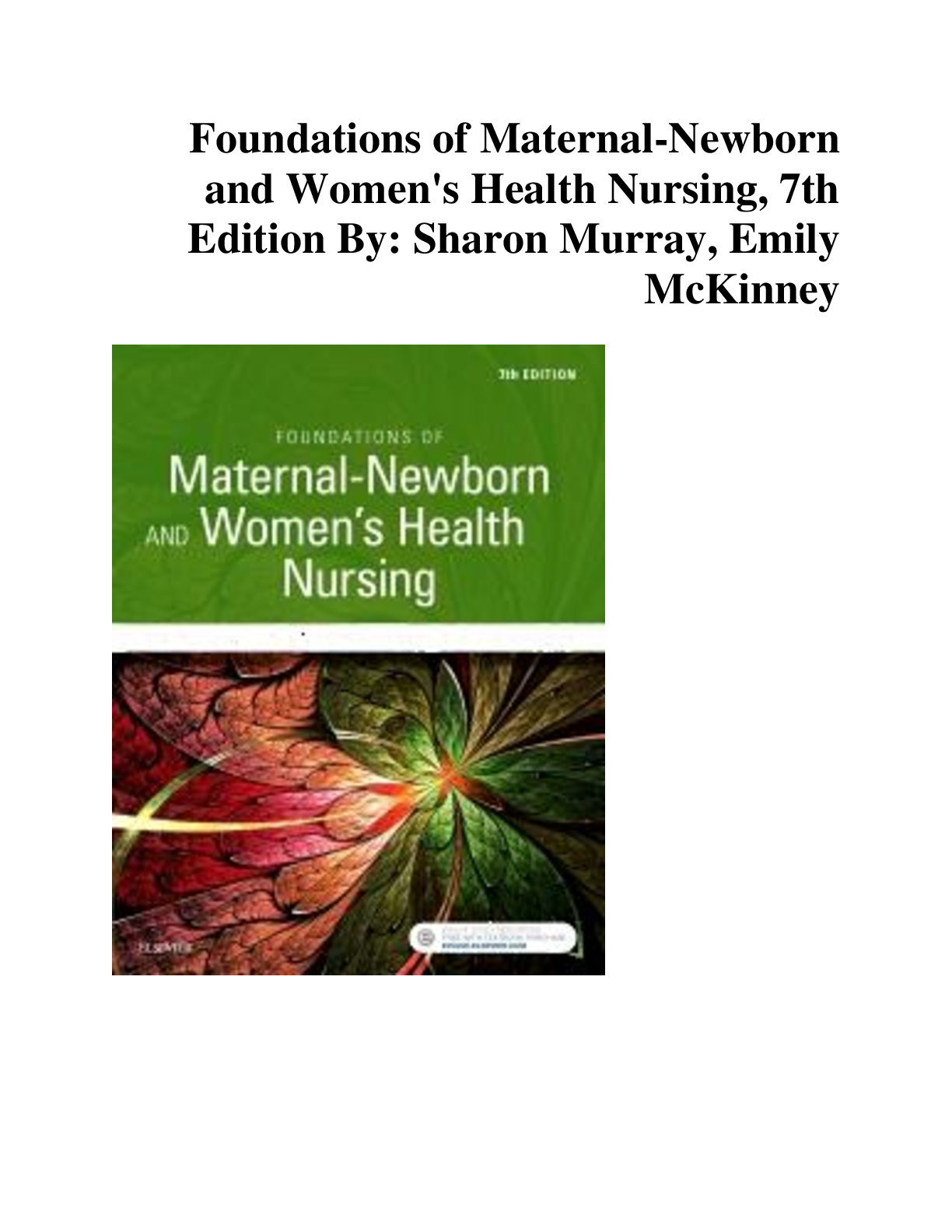*NURSING > QUESTIONS & ANSWERS > Essentials of Maternity, Newborn, and Women's Health Nursing Chapter 11: Maternal Adaptation During (All)
Essentials of Maternity, Newborn, and Women's Health Nursing Chapter 11: Maternal Adaptation During Pregnancy
Document Content and Description Below
Jessica and Mike are new clients at your obstetrics office. You are asking them about the reason for their visit. Jessica says she thinks she is pregnant because she missed a period. Mike tells you ... Jessica is always nauseated in the morning and eats all the time the rest of the day. They have not been using birth control and have wanted to have children since they got married last summer. Jessica says her clothes are feeling tighter and her breasts seem tender. Mike says he has noticed that Jessica has been frequently getting up to go to the bathroom at night. (Learning Objectives 2 and 4) What subjective symptoms have led Jessica and Mike to presume she is pregnant? What other conditions could be the cause of Jessica’s symptoms? How can a pregnancy be confirmed as probable? Diagnosed as positive? She is having high appetites and has missed her period, is also going to the bathroom more frequently and needs to take a pregnancy test to confirm her suspicion. Other conditions that could be the cause of her symptoms are menopause, endocrine dysfunction, malnutrition, anemia, diabetes, cancer, stress and gastrointestinal disorders. A urine test or blood test can confirm a positive or negative result. Discuss the nutritional needs of Jessica and her baby. If the test is positive She will need to consume more of each type of nutrients during her pregnancy. That will include meat, nuts and legumes to provide her body with protein and iron. Along with healthy eating will need to take prenatal vitamins to help the well-being of her and the baby. Beth (age 18) is experiencing her first pregnancy and is now 24 weeks gestation. She tells you that she is “amazed by the changes that have happened to my body already.” Beth wants to understand what additional changes are going to occur to her “besides just getting a really huge belly.” Additionally, Beth relates to you that she is in her senior year of high school, is no longer involved with the baby’s father, and lives at home with her mother and 12-year-old brother. (Learning Objectives 3 and 5) Explain to Beth (in terms she can understand) what general body adaptations she will experience throughout the remainder of her pregnancy. She can experience swollen feet and ankles, also begin to feel achiness in her lower abdomen in addition, and she may also experience leg cramps which is usually caused by dehydration. What psychosocial adaptations may Beth experience as a result of being a teenage, single mother living at home? The psychosocial adaptions she may experience are body dramatic body alteration, change in her social life, she may be afraid of giving birth and pain during delivery. May have fears of rising the baby alone without the father. Essentials of Maternity, Newborn, and Women's Health Nursing Chapter 13: Labor and Birth Process Emily, age 32, has an obstetrical history of G1, T0, P0, A0, L0. Emily’s week of gestation is 39.1. Emily telephones the health care provider’s office and tells the nurse she believes she is in labor. Based on her assessment, the nurse advises her to have her husband bring her to the labor and birth unit. Emily arrives and is admitted. She is talkative and excited about being in labor and describes her contractions and discomfort as mild. The following are the assessment findings of the examining nurse: Maternal vital signs are stable. Fetal heart tones with the external fetal monitor are reassuring. Vaginal exam indicates the cervix is 3 cm dilated, 40% effaced, membranes intact with the presenting part engaged. Ten minutes after the vaginal exam by the nurse, Emily says, “I think I just wet my pants.” (Learning Objectives 2, 6, 7, and 8) What questions might the nurse have asked Emily to determine that she may be in true labor? What prenatal history information should the nurse have obtained during the telephone call? The nurse, I would ask her how far apart her contractions are and intensity of the contraction. The nurse should also as Emily if her water has break. Explain the meaning of the nurse’s assessment findings. Identify the stage and phase of labor, listing the physiologic and psychological changes during this stage. What positions and activities would be appropriate for Emily based on the assessment data? Why? Physiologic change in labor: Weight loss 0.5 to 1.4 kg, 1 to 3 lb. weight loss Back ache – a constant low, dull backache caused by pelvic muscle relaxation Lightening- fetal head descends into true pelvis about 14 days before labor feeling like the fetus has dropped, easier breathing, but more pressure on bladder frequent urination. Bloody show- brownish or blood tinged mucus discharge caused by expulsion of the cervical mucus plug resulting from the onset of cervical dilation and effacement Energy burst- Sometimes called nesting response Water breaks- labor usually occurs within 24 hr of rupture of membranes, prolonged rupture of membrane greater than 24hr before delivery of fetus may lead to an infection. Psychological Responses: Maternal stress tension and anxiety can produce physiological changes that impair the progress of labor Stages of labor: First stage: from 0-10cm dilation consists of three phases Latent phase- Cervical dilation from 0-3cm, cervical effacement from 0% to 40%, frequent contractions every 5-10 min, contraction duration 30-45 sec that are mild. Active phase- Cervical dilation from 4-7cm cervical effacement 40% to 80%, contractions 2-5 min, contraction duration 45-60sec that are moderate to palpation. Transition Phase- Cervical dilation 8-10cm cervical effacement 80% to 100%, contractions every 1-2 min, contraction duration 60-90 sec that are strong by palpation. Second stage: from complete dilation 10cm to birth of the newborn; may last up to 3hr [Show More]
Last updated: 2 years ago
Preview 1 out of 27 pages
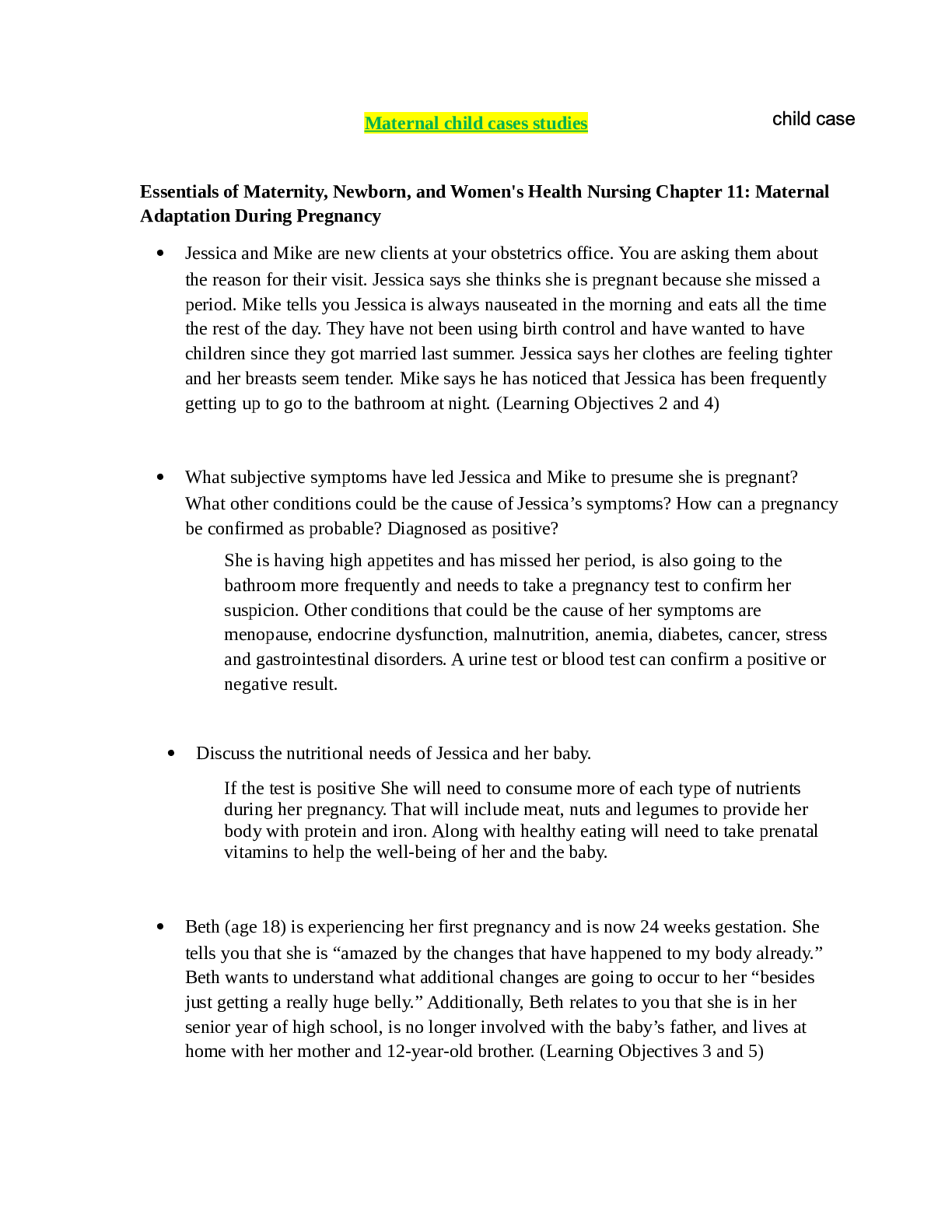
Buy this document to get the full access instantly
Instant Download Access after purchase
Buy NowInstant download
We Accept:

Reviews( 0 )
$7.50
Can't find what you want? Try our AI powered Search
Document information
Connected school, study & course
About the document
Uploaded On
Jan 10, 2022
Number of pages
27
Written in
Additional information
This document has been written for:
Uploaded
Jan 10, 2022
Downloads
0
Views
99


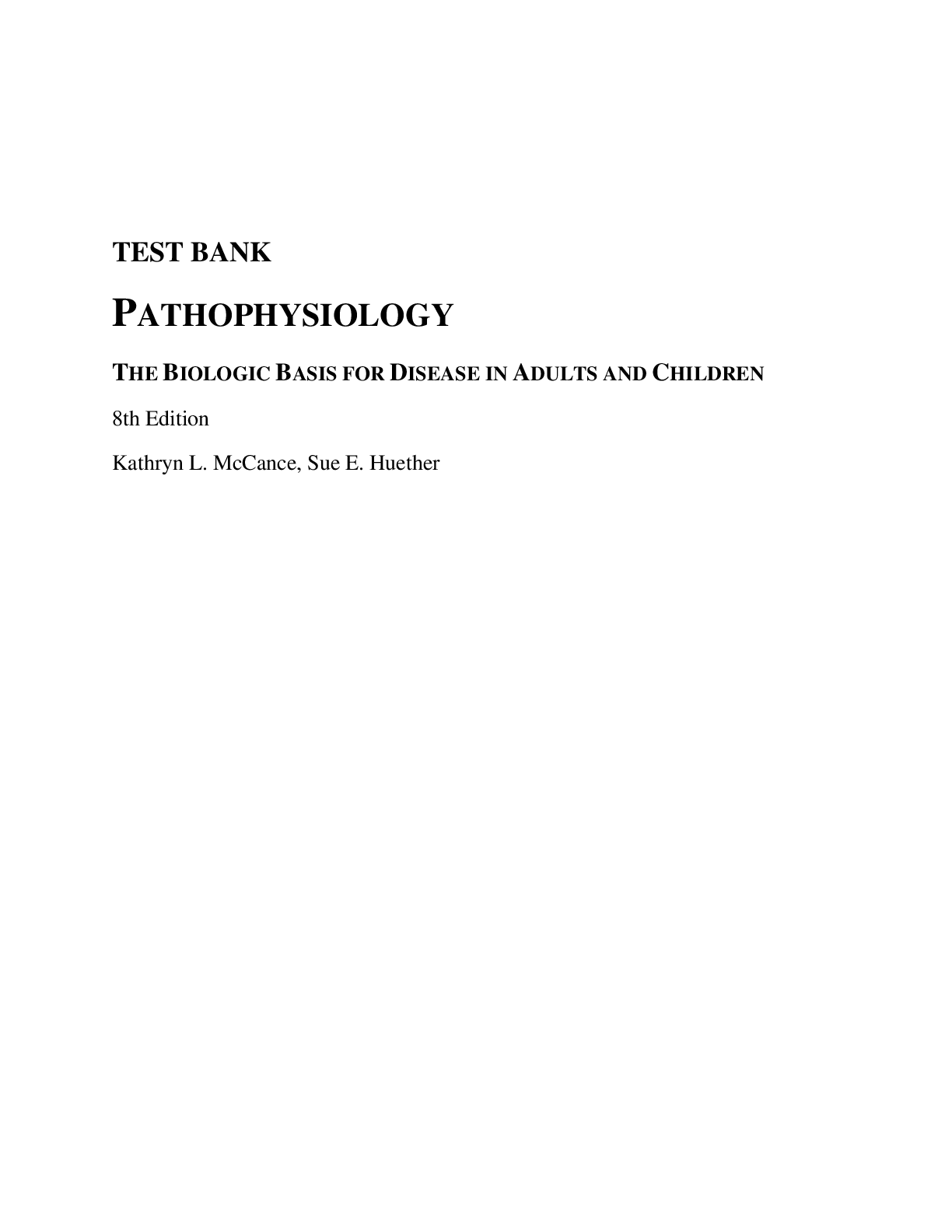

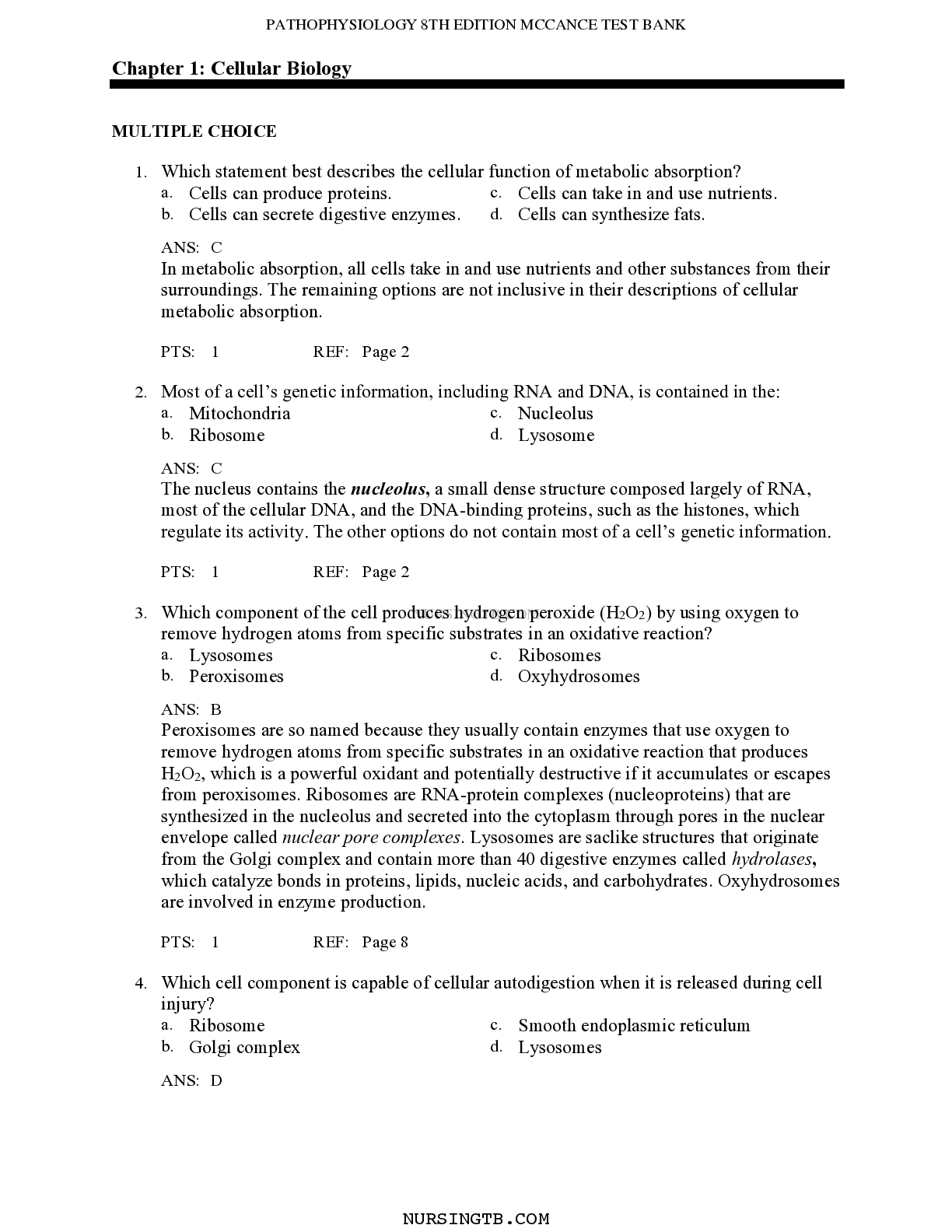
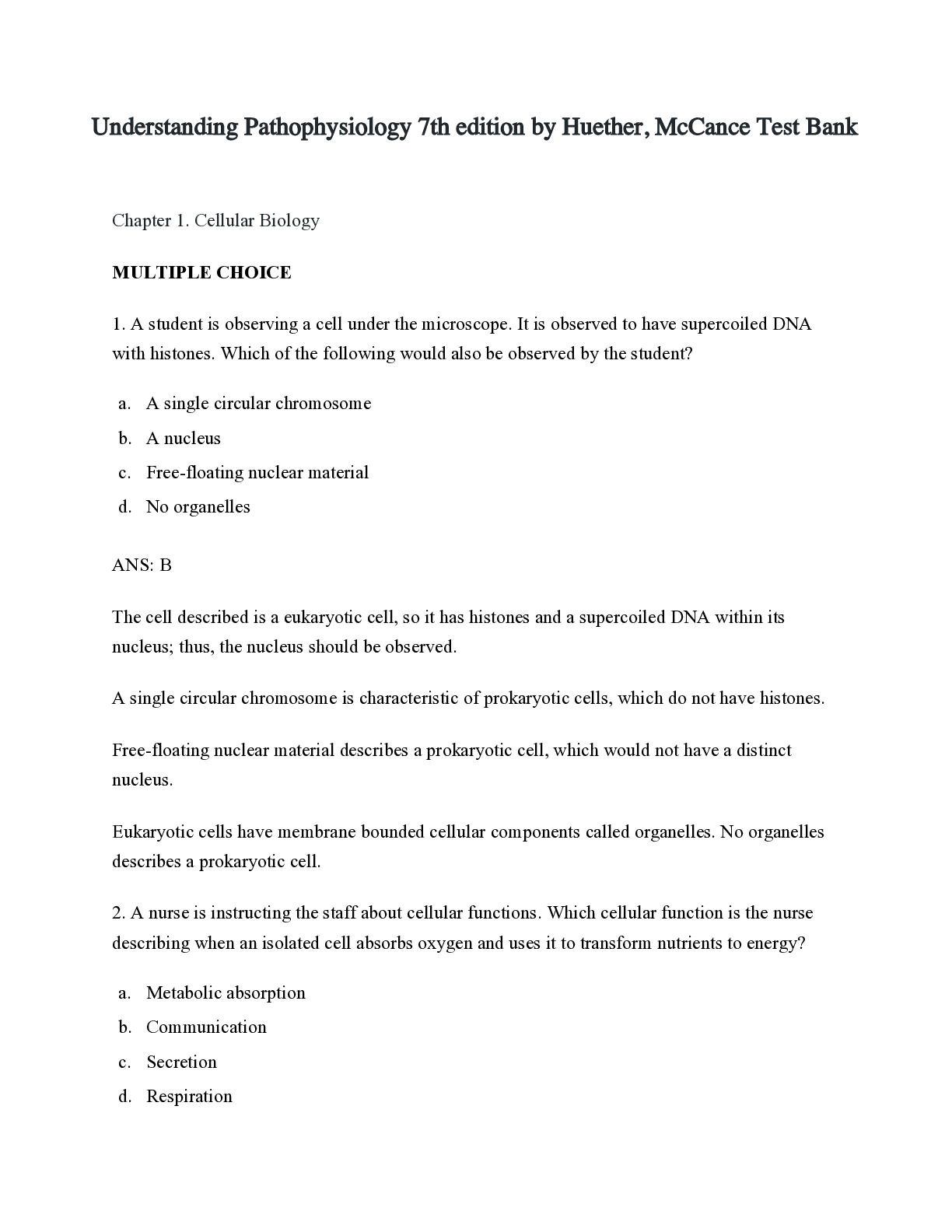
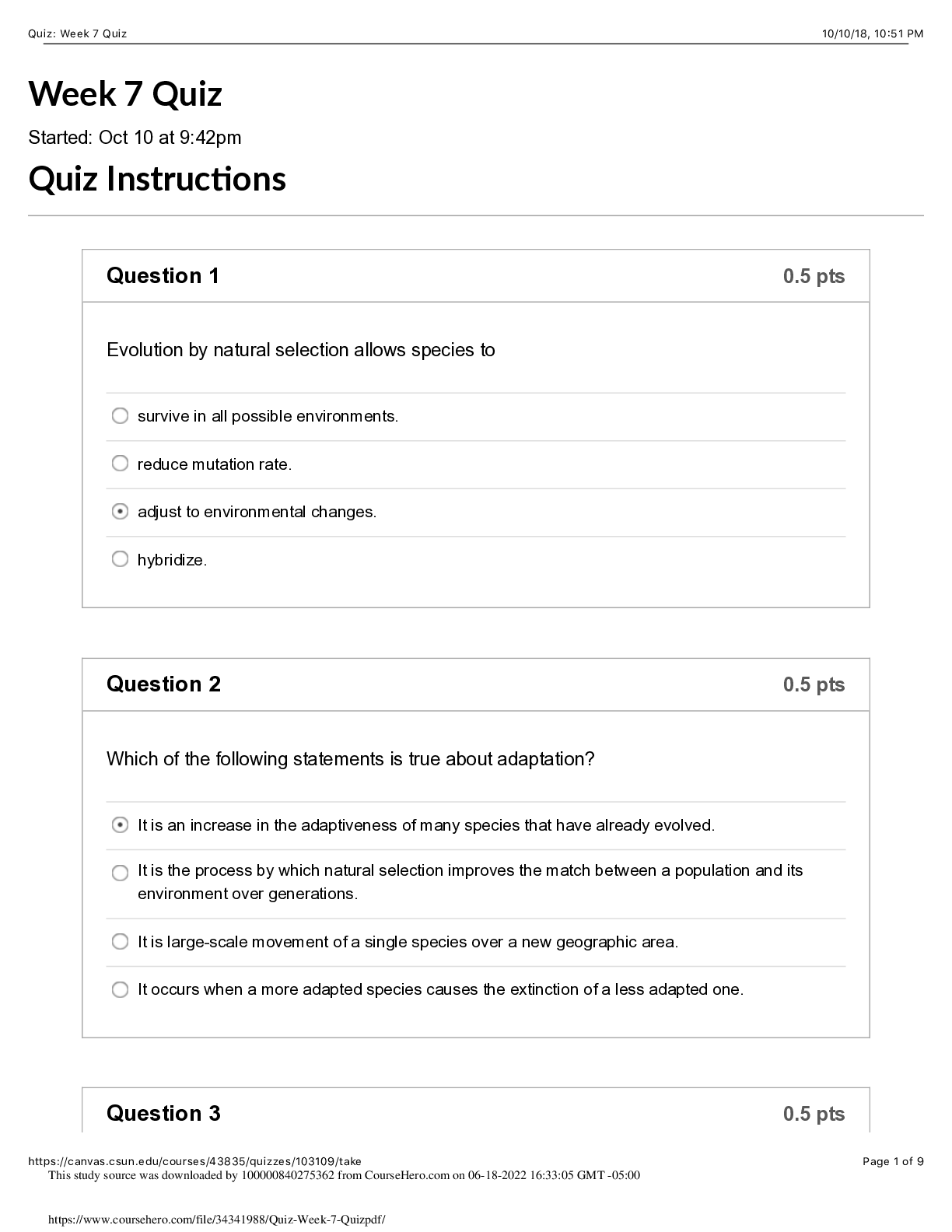


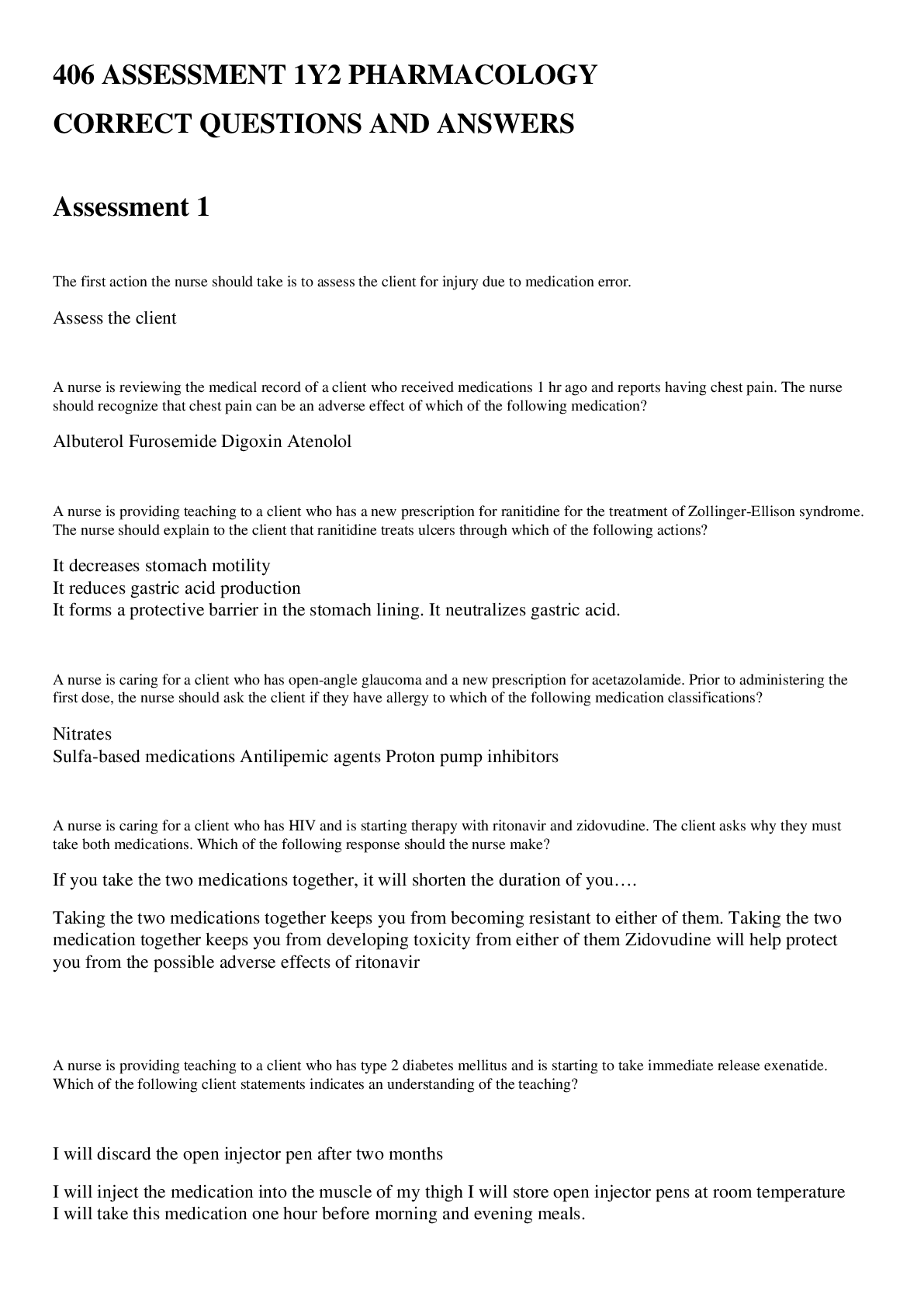
.png)





.png)
